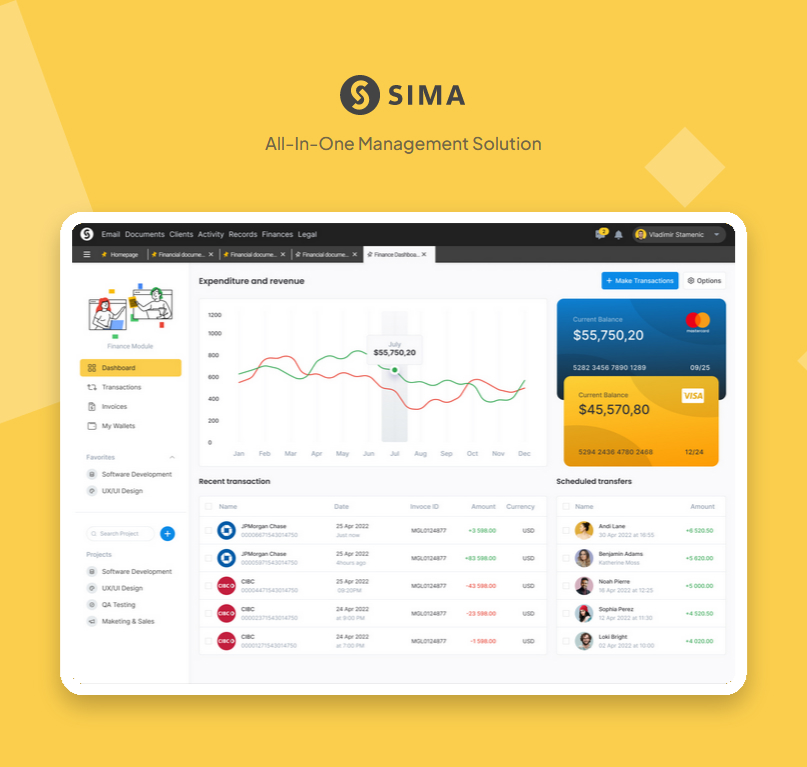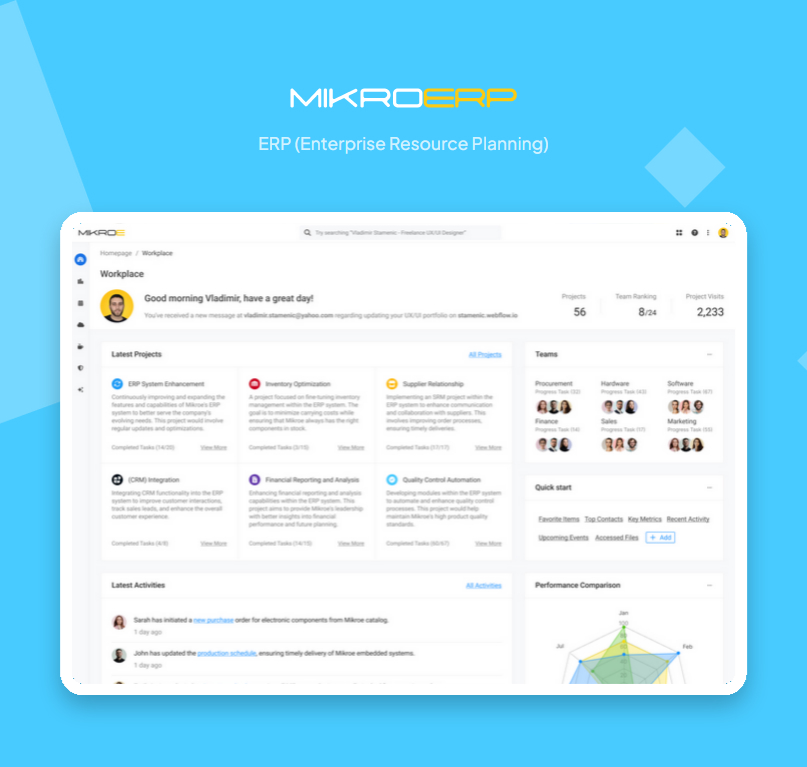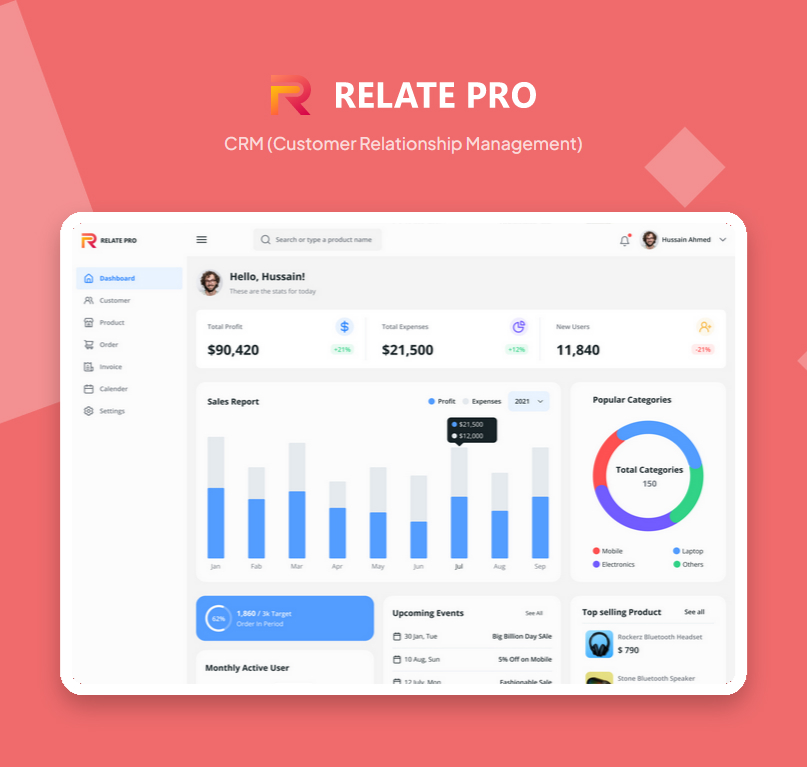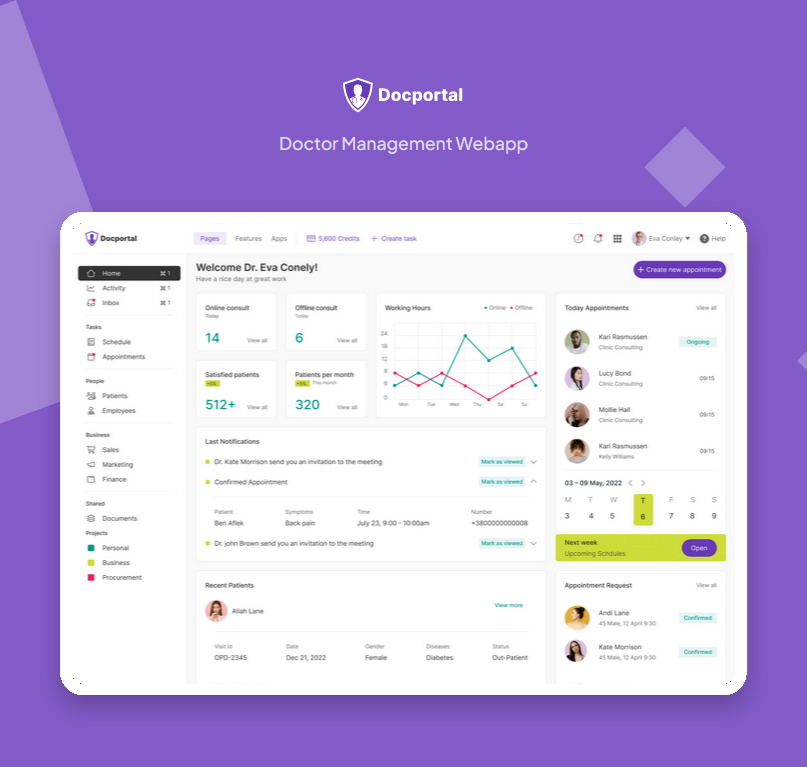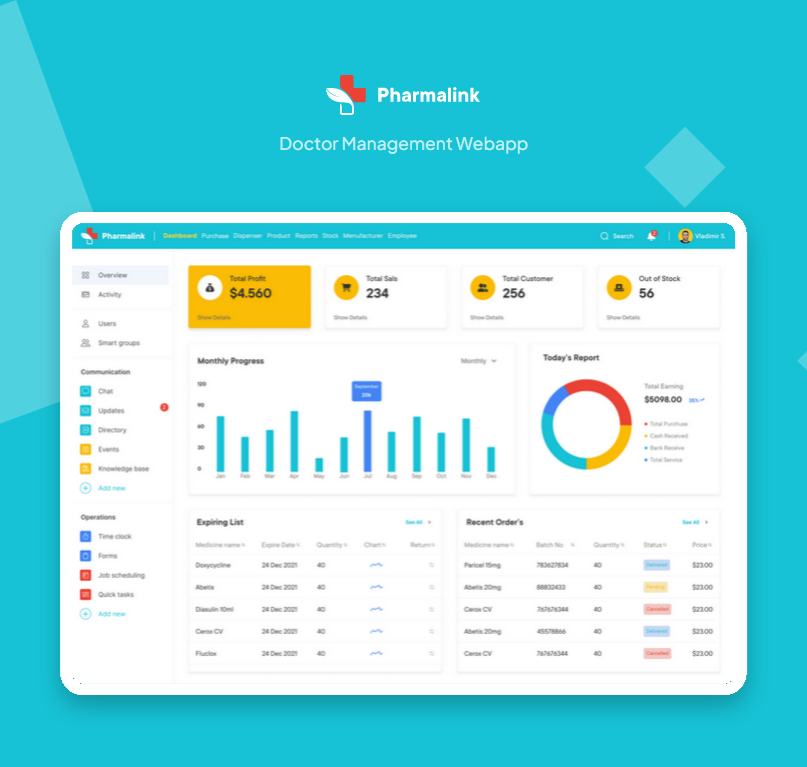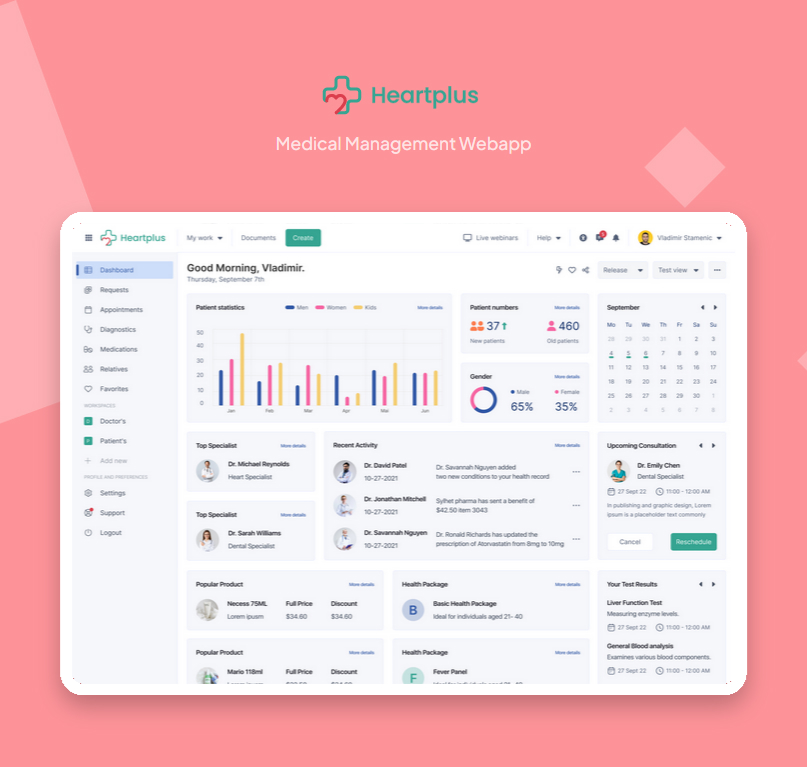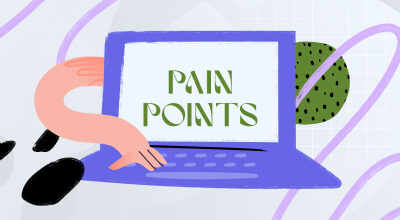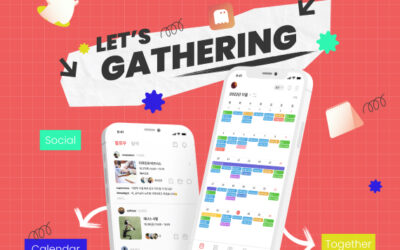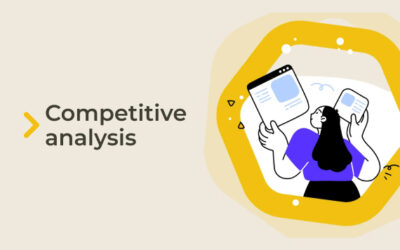Identifying and Overcoming Obstacles In the ever-evolving landscape of UX/UI design, addressing pain points throughout the design process is crucial for creating engaging and user-friendly experiences. From understanding user needs to iterating design solutions, every...


Data-driven Design
with a focuse on SaaS
Your partner specialized in
designing Business Management Apps
Enterprise-level solutions
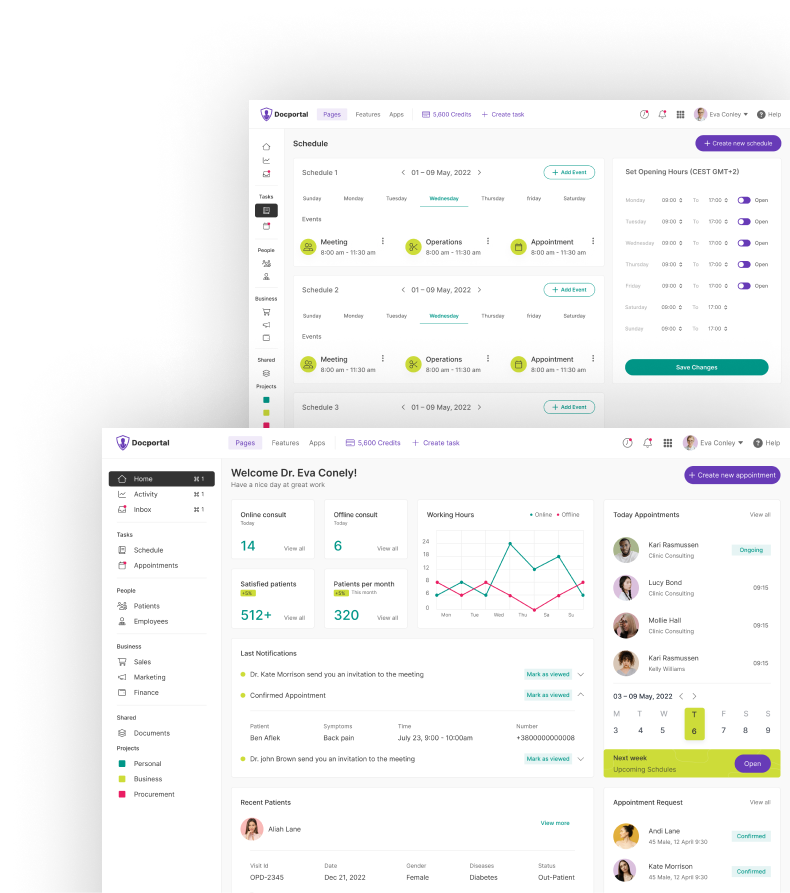
Recent work
User-friendly work and nothing else.
Design system included
Composed of many libraries, style guides, and guidelines,
which are all designed to optimize your design efforts.
Introduction Video
Questions? Here are answers.
1. Could you tell us more about your experience, and can you describe your design process from start to finish?
Hi, thank you for checking out my profile. My name is Vladimir and I’m your partner specializing in designing business management applications. I’m here to help you overcome any challenges you have while developing your data-driven SaaS solutions.
My journey began seven years ago after graduating from the University of Technical Sciences. In the initial three years, my focus was on designing ERP system catering to the company’s specific requirements. I created intuitive user-centric designs, simplifying complex workflows, and establishing design standards for enterprise-level solutions.
After that, I moved to another company, working for another three years on a similar, but more extensive project with a greater number of modules and functionalities. That was an all-in-one solution, for managing the entire business. I worked on conducting user research to improve user experience, establishing the design system, and creating new modules, components, and flows for this software solution. This project not only deepened my expertise but also enriched me with the necessary experience to construct highly effective user interfaces for complex business management applications.
After working on these two projects for six full years, I decided to continue my professional career as a freelancer helping brands and individuals make the best decisions for their management solutions. Over the past year, I have been involved in a healthcare and CRM projects.
And finally let me mention something about my basic design work process.
My design process typically starts with a deep dive into understanding the target users and their needs. This involves user research, persona creation, and sometimes conducting usability tests. Once I have a clear understanding of the users, I move on to wireframing and prototyping to visualize the user journey and interactions.
From there, I collaborate closely with cross-functional teams, including developers and product managers, to iterate on the design and ensure that it aligns with both user needs and business goals. Regular feedback loops and design reviews are crucial to refining the final product.
I also place a strong emphasis on usability testing throughout the design process to validate design decisions and make necessary adjustments. This ensures that the end product not only looks great but also provides a seamless and intuitive user experience.
In summary, my design process revolves around user-centricity, collaboration, and iterative improvement to create designs that not only meet but exceed user expectations.
2. How does your experience in user research impact both end-users and business outcomes.
User research is, in essence, the cornerstone of my UX/UI design philosophy, with far-reaching implications for both end-users and business success. Firstly, from a general standpoint, user research helps in achieving a profound understanding of the target audience. By comprehending their motivations, pain points, and preferences, we can create solutions that resonate with users on a fundamental level.
From an end-user perspective, this translates to more intuitive, user-friendly interfaces. Let me share a concrete example to illustrate this. In a project where we were developing a finance management application, our user research revealed that financial professionals often struggled with the complexity of data entry and reconciliation.
To address this, we introduced features like automated data import from financial institutions, smart categorization of expenses, and real-time reconciliation. These changes significantly reduced the time and effort required for users to manage their finances. It not only made their experience smoother but also minimized the risk of errors, a critical concern in financial management.
Now, from the business standpoint, user research becomes instrumental in optimizing operations and driving growth. In the case of the finance application, the improvements based on user research led to increased user retention rates and, in turn, expanded the user base. This, of course, positively impacted the business’s revenue streams.
Another example comes from a task management module we worked on. Our research uncovered that users often struggled with prioritizing tasks, leading to inefficiencies in their workflows. To address this specific challenge, we introduced an intelligent task prioritization algorithm that analyzed deadlines, importance, and dependencies.
This algorithm helped users create a more structured and efficient task list, ultimately leading to improved productivity. For the business, this translated into higher user satisfaction scores, increased premium subscription conversions, and stronger brand loyalty.
These examples underscore how user research isn’t just a preliminary step but an ongoing, iterative process that continually refines and elevates the user experience. It’s about making tangible improvements that enhance both the lives of end-users and the success of the business.
3. Share a brief example from your usability testing experience and how it improved user satisfaction and project success
Usability testing is one of the most impactful phases in the UX design process, both in terms of enhancing end-user satisfaction and ensuring the success of a project. To put it in general terms, usability testing serves as the bridge between design theory and practical user experience.
From a broader perspective, the insights gathered through usability testing are invaluable. They provide a real-world perspective on how users interact with an application, shedding light on pain points, stumbling blocks, and areas of frustration. This not only benefits end-users by improving the usability of the product but also contributes significantly to the success of the project.
Now, let me share a specific example from a project involving a task management application for businesses. During our initial design phase, we believed that a highly visual and feature-rich interface would be most appealing to users. However, our usability testing quickly revealed a different story.
Users found the interface overwhelming, struggling to navigate through the multitude of options and visual elements. It became clear that our design, though aesthetically pleasing, hindered rather than aided productivity. This was a crucial moment where the findings from usability testing became paramount.
Based on these insights, we decided to pivot our design approach. We streamlined the interface, focusing on simplifying task creation, categorization, and prioritization. We also introduced a guided onboarding process to help users understand the application’s features.
The impact was twofold: end-users experienced a drastic improvement in usability and overall satisfaction. Tasks became easier to manage, and users felt more in control of their workflows. As for the business, the simplified interface led to a significant increase in user adoption and retention rates.
In this case, usability testing served as a reality check, highlighting that what might seem like an elegant design on paper doesn’t always translate into a seamless user experience. This example underscores how usability testing, with its ability to uncover actionable insights, can be the linchpin for achieving both end-user satisfaction and project success in the realm of management applications.
Pricing
Enhance your product at a budget-friendly costwith our web design service at a flat fee.
Weekly
For your shortest design needs- Designs within 7 days
- Average 24 hour delivery
- Unlimited revisions
- Managed via Trello
- Figma source file
- Pause or cancel anytime
Quarterly
For your long-term design needs- Design within three-month period
- Average 24 hour delivery
- Unlimited revisions
- Managed via Trello
- Figma source file
- Pause or cancel anytime
Monthly
For your shorter design needs- Design within one-month period
- Average 24 hour delivery
- Unlimited revisions
- Managed via Trello
- Figma source file
- Pause or cancel anytime
Blog Posts
Unlocking the UX/UI Journey and Explore
a World of User-Centered Strategies
Gathering Insights: From research to design
From Research to Impactful Design In today's digital landscape,creating user-centric products that truly cater to the needs and desires ofusers is a top priority for businesses. As designers, the key to craftingexceptional user experiences lies in our ability to...
Qualitative Analysis: Uncovering user insights
Uncovering User Insights As the world of UX/UI designcontinues to evolve, designers are constantly seeking ways to better understandthe emotions, motivations, and behaviors of their users. One invaluableapproach that has emerged in this pursuit is Qualitative Analysis...
Competitive Analysis: Boost your design strategy
Boost Your Design Strategy In the rapidly evolving world of user experience (UX) design, staying ahead of the competition is essential for success. To create memorable, user-centric products, designers must constantly refine their strategies and adapt to the...
Design Strategy
A Comprehensive Guide to Crafting Winning UX/UI Solutions Welcome, fellow designenthusiasts! Are you ready to embark on an exciting journey that will take yourUX/UI projects from "meh" to "marvelous"? Strap in, becausewe're about to explore the fascinating world of...
Stakeholder Interviews
Leverage Conversations for Better UXUI Outcomes Stakeholder interviews are acritical part of any UX/UI design process. They provide invaluable insightsinto the needs, goals, and pain points of the stakeholders, helping designerscreate better products and experiences....
Scope of Work
Powering Efficiency Across Management Fronts
